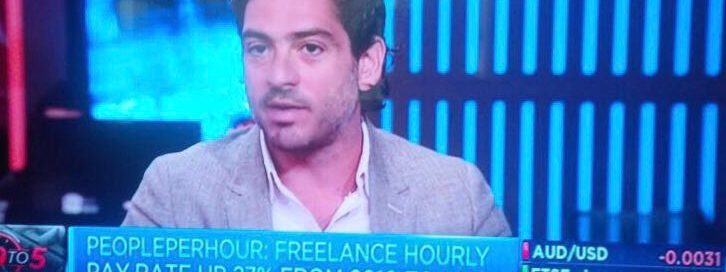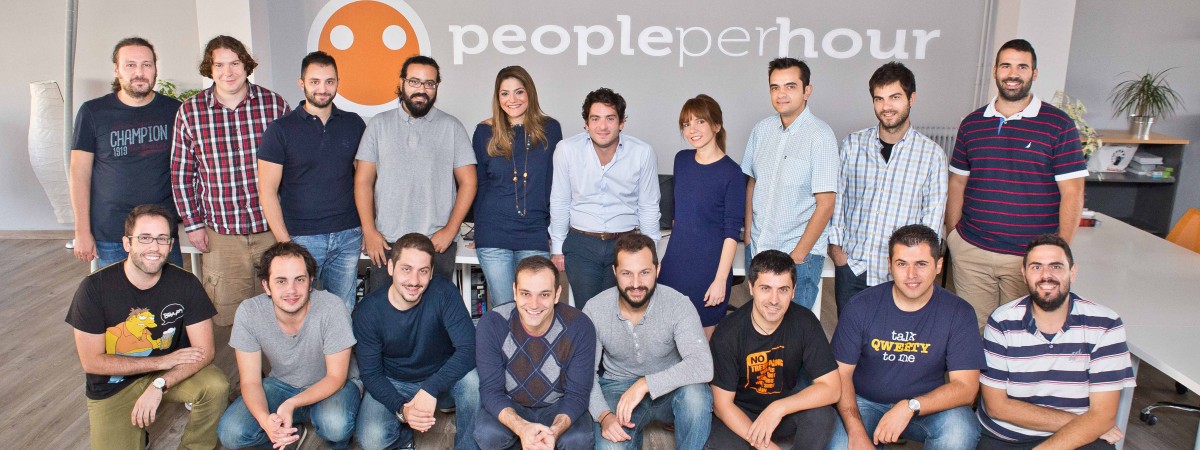The death of the Corporation
The freelance economy now accounts for over one in three people in the working population. That’s over a trillion dollars in the UK and US markets alone. Over $1bn per annum is spent today online in hiring and paying for freelancers a figure which is projected to grow to $5bn within the next 3-5 years according to Industry analysts.
Most people associate the move to this new way of working as a drive to cut costs and be more flexible. All of which is true. However, I believe the biggest benefit of this new way of working is not in cost cutting, and I make the case here by drawing on our own experience at PeoplePerHour of eating our own cooking. The biggest benefits of freelance working – if implemented correctly – are a drastic increase in productivity. I argue here that what drives that in turn are two things: 1) hyperspecilization ie breaking traditional more generalist jobs down to smaller ones and hiring people who are experts and super focuses on those jobs, anywhere in the world, to execute them , and 2) accountability. Which comes from transforming the traditional employer- employee relationship to one of service provider – client.
Hyperspecialization
Thomas Malone of Harvard Business school wrote an article called The Big Idea: the Age of Hyperpsecialization in 2011 which talks about how we are entering the next evolution of Adam Smith’s division of labor thesis. Adam Smith argued that division of labour drives productivity gains via specialization. The thesis is implemented in the design of production systems where each worker specializes in a specific task. This same thesis is now being applied to the knowledge economy.
As Malone puts it:
“Just as people in the early days of industrialization saw single jobs (such as a pin maker’s) transformed into many jobs (Adam Smith observed 18 separate steps in a pin factory), we will now see knowledge-worker jobs—salesperson, secretary, engineer—atomize into complex networks of people all over the world performing highly specialized tasks.”
Yesterdays blue collar worker is today’s knowledge worker. But the underlying driver is the same: as an industry matures, it gets more complex. Customers want more choice. On top of that the global economy is becoming more integrated and inter-connected. Complexity is increasing and thus more specialization (or hyperspecialization) is needed to deal with it.
This is what the freelance economy now allows for which otherwise is near impossible. As a case in hand, what we’ve done at PeoplePerHour for example is take traditional jobs like ‘Head of Marketing’ and break them down into 5 separate roles executed by hyperspecialized freelancers working a few hours week, focusing only on one task and optimizing for a very focused set of KPIs. And we’ve seen this work much better than getting one super expensive, super experienced super star marketer armed with their MBAs and what not.
For example we have one person doing email marketing, one person doing outbound community management, one person doing inbound, one person doing PR and one person doing performance marketing. All of these are freelancers, specialists in their respective fields in ways which no one person can match. They all work in the cloud and they all have other clients as well which means they bring in new fresh ideas and best practice to us.
The downside is that you have more moving parts to manage, however, against all odds it ends up being easier to manage. And the reason is the second big driver of productivity I mentioned above – accountability
Accountability
The norm is to turn freelancers into in-house staff. You try them out as freelancers and if they do well you bring them in-house. At PeoplePerHour we’ve done the exact opposite. We’ve turned in house staff to freelancers, and now we have a ratio of 1 in house person to 6 freelancers or contractors.
Even though it’s the same person, with the same skills, often working the same hours and in the same capacity, something magical happens when you turn an Employee-Employer relationship to one where you are the customer. It’s a 180 degree mind-shift.
Suddenly the ‘my boss told me so’ mindset switches to one of ‘how can I please my client’ so that they retain me longer and so that they refer me to new clients. The complacency that comes with basking in the comfort of job security is replaced with a culture of everyone being kept on their toes (as a provider should be with their client) and a much more customer-centric mindset.
Managing those relationships becomes immediately much easier. For starters there are things you shouldn’t or cant say to employees, there’s a limit to how demanding you can be and how much you push for results. All that goes away when you become a client. If they put something crap in front of you, you can just sat ‘its crap’. Without sugarcoating. Which is much better in terms of pushing people to step the hell up and not waste time beating about the bush and walking on egg shells lest you offend someone. I find it very liberating. A culture of brutal honesty is bound to get better results in the end.
It’s a miraculous transformation. And I believe every company should operate like this. There’s a much stronger customer ethos. I tell my team: don’t tell me anything a customer doesn’t want to hear. Things that teams come up with in the Employee – Employer relationship when things don’t happen like ‘oh so and so was sick’ or ‘ my computer wouldn’t boot up, ‘my excel broke’, ‘my cat died’, ‘my machine isn’t fast enough’, ‘I have no bandwidth’ , ‘the system crashed ’ or my all-time favorite ‘ I sent an email to X but he didn’t reply! ’ Does the customer give a sh** if you sent an email and they didn’t reply? Let’s get real.
Yet that’s how most Corporations operate. And that’s why I think the Corporation as we know it is a beast that will die a slow death. The C in Corporation will be replaced by Community. A community of self-employed, freelance talent, hyperspecialized and super-focussed, delivering measurable results, and where there is no longer Employer-Employee but there is Provider – Client. Where there is no taking comfort in the security of employment and where everyone is driven by what drives every company to success: making customers happy.

















Your email address will not be published.